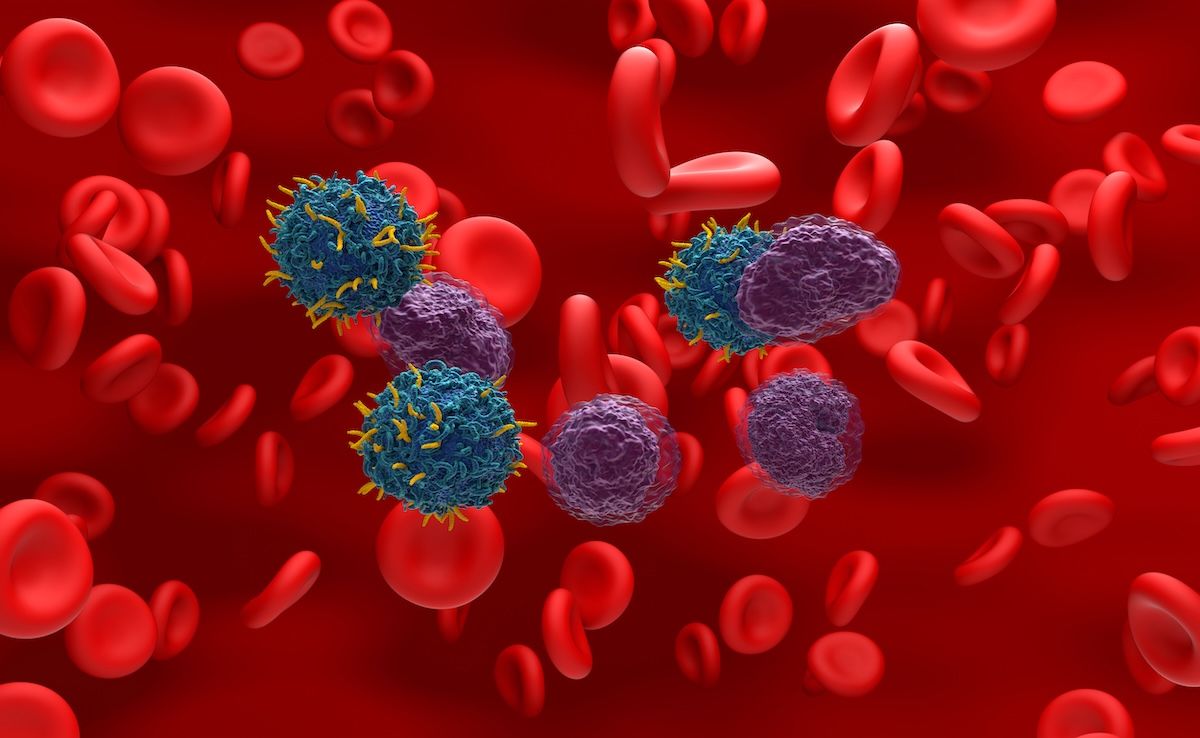Article
Hypercalcemia in Multiple Myeloma Leads to Poor Prognosis
Author(s):
New research attempts to answer some of the mystery related to the causes and impact of hypercalcemia in patients with newly diagnosed multiple myeloma.
Hypercalcemia is caused by many factors in patients with newly diagnosed multiple myeloma (NDMM) and is associated with poor rates of survival, according to a new study.
Hypercalcemia of malignancy (HCM) is a metabolic complication of cancer that occurs when humoral mechanisms like parathyroid hormone related protein- (PTHrP) or 1,25-dihydroxy vitamin D-mediated pathways and direct bone metastasis, according to corresponding author Li Bao, MD, PhD, of Beijing Jishuitan Hospital, in China, and colleagues. Hypercalcemia can occur in various types of malignancies, but the highest rates have been reported in MM.
In such cases, local osteolytic bone lesions are thought to be the primary cause, the investigators wrote. Humoral hypercalcemia, on the other hand, typically occurs in patients with squamous cell, renal cell, or ovarian cancer.
Bao and colleagues said there is little existing research into key questions about hypercalcemia in MM, such as the proportion of hypercalcemia caused by humoral hypercalcemia of malignancy (HHM) or local osteolysis, and the association between hypercalcemia and bone metabolism in patients with MM.
The researchers set out to change that by evaluating the prognostic impact and mechanism of hypercalcemia in patients with symptomatic NDMM. Their findings were published in the journal Cancer Medicine.
The investigators used data from 357 patients who were initially diagnosed at Beijing Jishuitan Hospital and who received their follow-up care there between the years 2013 and 2019.
Of the 357 patients, 16.8% had hypercalcemia at the time of diagnosis, and those patients had some common laboratory results.
“The presence of hypercalcemia was associated with higher serum levels of β2 microglobulin, creatinine, phosphorus, uric acid, procollagen I N‐terminal peptide, β‐carboxy‐terminal cross‐linking telopeptide of type I collagen and osteocalcin, lower serum levels of hemoglobin, parathyroid hormone (PTH),” the authors wrote, adding that these patients also had higher stages on the MM International Staging System (ISS) and revised ISS (R-ISS).
Of all of those factors, the authors said serum PTH, hemoglobin, creatinine, and uric acid levels were the primary factors affecting hypercalcemia.
Patients who had hypercalcemia faced significantly worse survival rates, with a median of 40 months compared to 57 months in patients without the complication. The negative prognostic effect held up both in a univariate analysis and in a multivariate model that included adjustments for age and R-ISS stage.
Bao and colleagues said their data contradicts the notion that bone lesions are the primary cause of hypercalcemia, noting that 91.2% of patients in their study had bone destruction, but only 16.8% had hypercalcemia.
“Thus, hypercalcemia mainly caused by localized bone disease could not well explain our clinical insights,” the investigators said. While local bone lesions seem to be related to hypercalcemia, they said, such lesions are not the most important factor.
Instead, the authors suspect that humoral hypercalcemia is the main cause of hypercalcemia in MM. They said the high rate of kidney impairment (81.8%) among patients with severe hypercalcemia suggests the kidneys have an important role in hypercalcemia. They said anemia appears to be indirectly related with hypercalcemia.
Still, the authors said many questions remain, and the findings of this study will need to be replicated, given the limits of a retrospective study.
Reference
Bao L, Wang Y, Lu M, et al. Hypercalcemia caused by humoral effects and bone damage indicate poor outcomes in newly diagnosed multiple myeloma patients. Cancer Med. Published online November 4, 2020. doi:10.1002/cam4.3594





